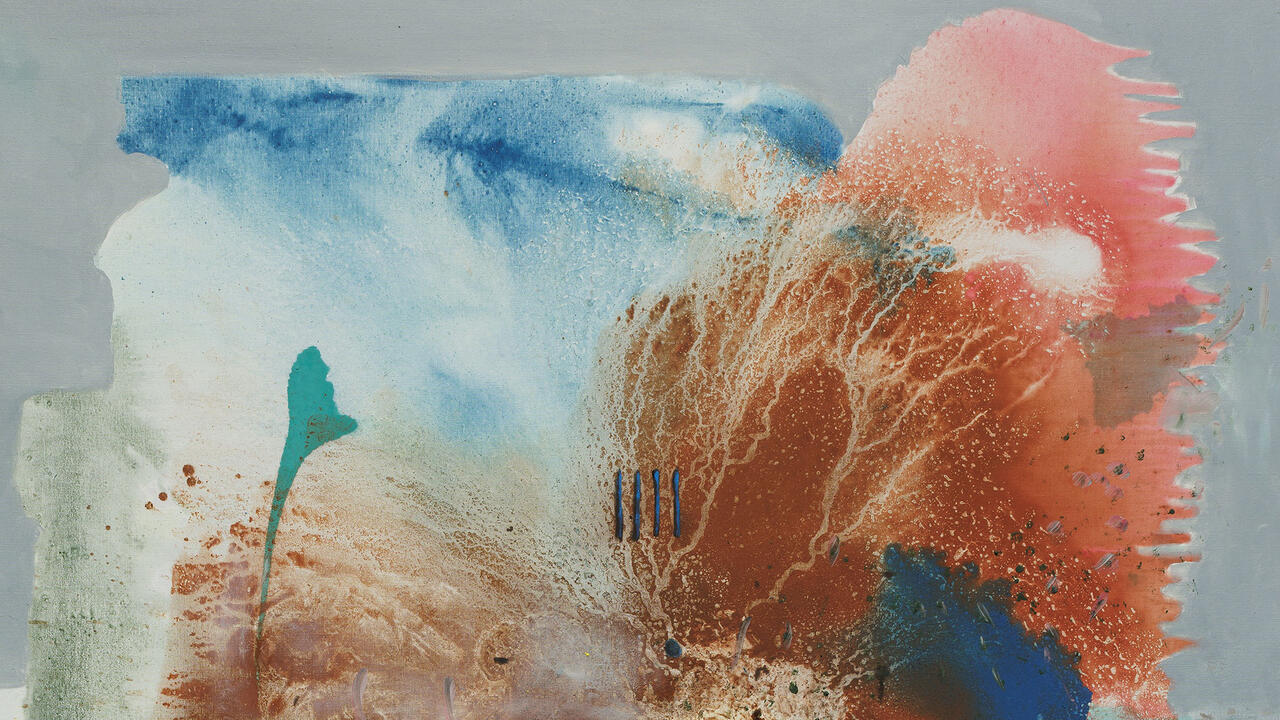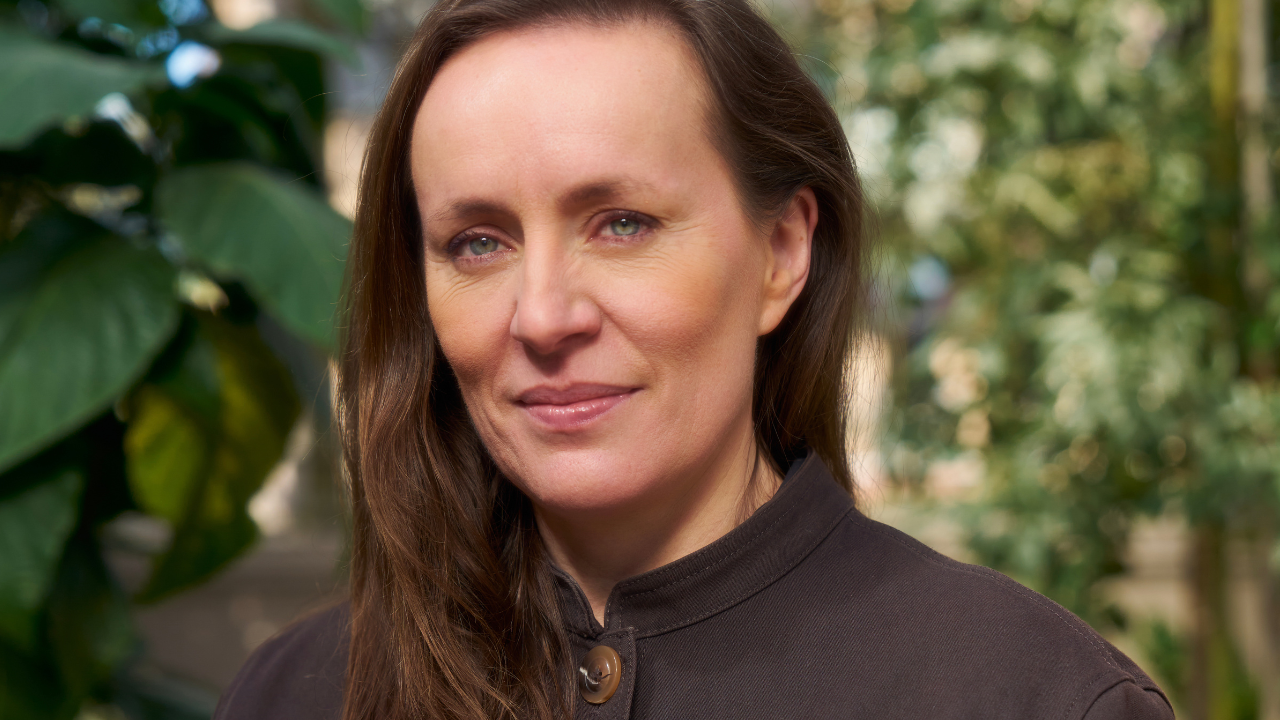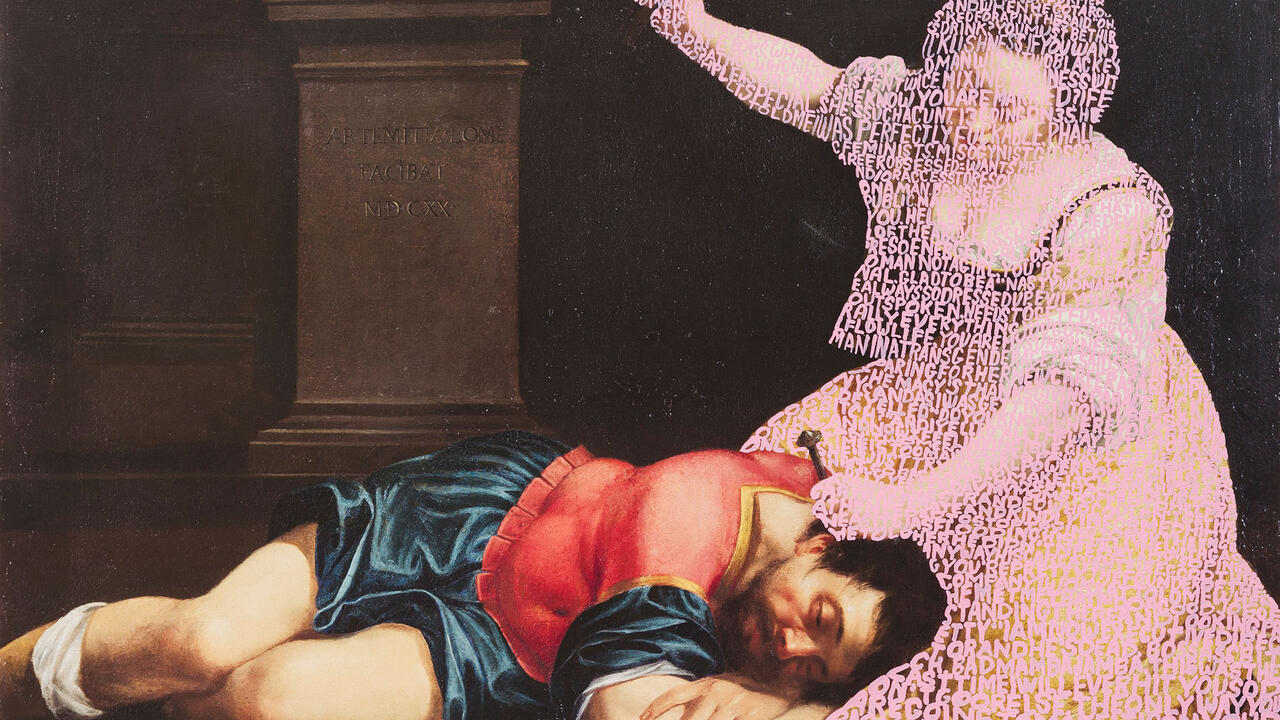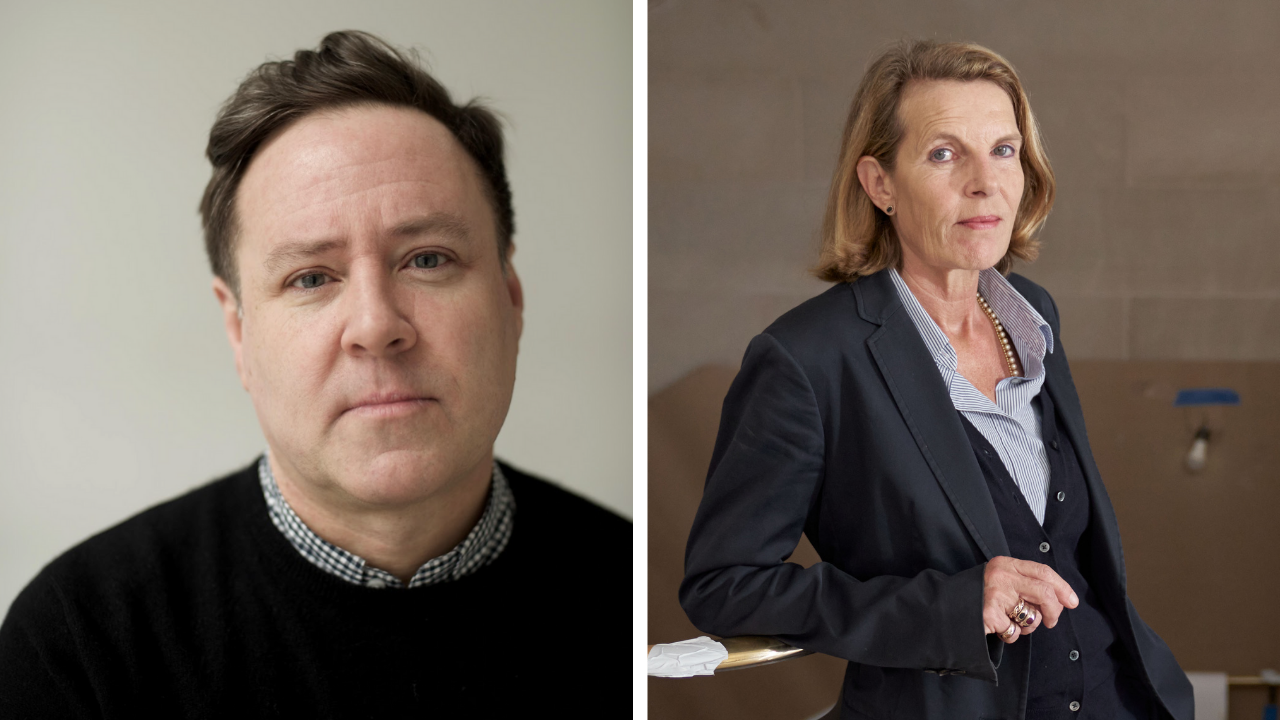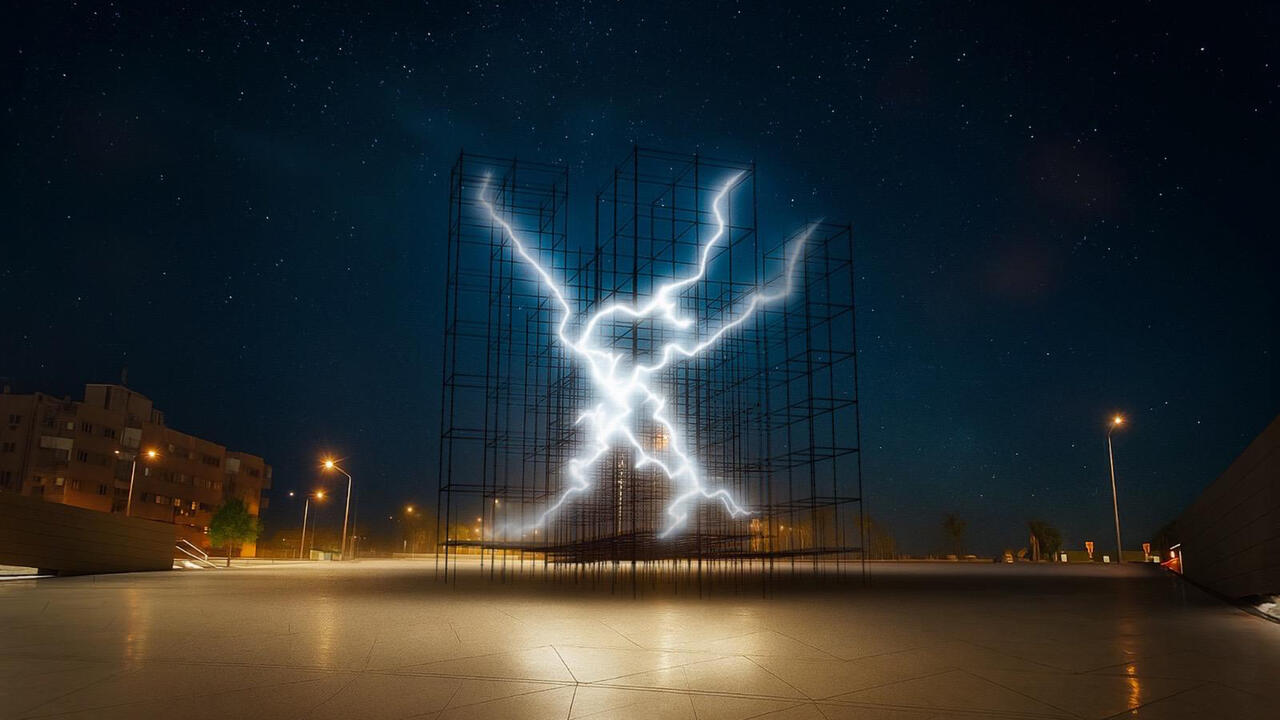Dressing, no Salad
John M Armleder and Mai-Thu Perret discuss art making, Switzerland, Genesis Breyer P-Orridge and rowing
John M Armleder and Mai-Thu Perret discuss art making, Switzerland, Genesis Breyer P-Orridge and rowing
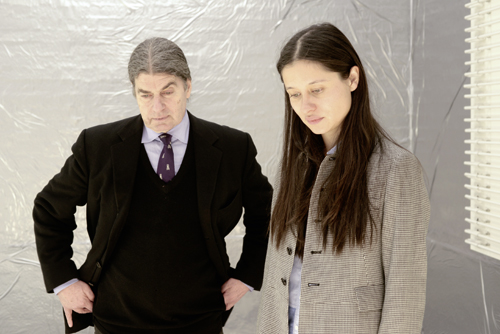
Mai-Thu Perret John, you are an artist of the postwar – or maybe the ‘hippie’ – generation …
John M Armleder I’m of a generation without the traumas of war
suffered by previous ones. In our fairly privileged Western world, we could reconsider what had been previously taken as a given. The 1960s and ’70s were a time when the art world was still very small. Everyone knew each other. There were lots of co-operatives, and I was part of one, the Ecart collective. Once we did a performance that involved reading a list of the active artists of the day, and we probably named about 80 percent of them. If you tried to do that today, you wouldn’t get even remotely close to that percentage.
MTP From today’s perspective, who are the artists you are still, or again, interested in?
JMA On principle, there is no artist I am not interested in. For example, I am going to be in a two-person exhibition with the French artist Jean Carzou, who today doesn’t seem to fit anywhere. On a different note, I am curating a show of Domenico Battista, an Italian artist who lives in Geneva, who was very close to the Op Art movement. His work is of the same value as the kind of stuff we saw a few days ago in Paris.
MTP Yes, we visited the exhibition Dynamo – A Century of Light and Motion in Art at the Grand Palais in Paris, and it seems like there is a massive Op Art revival going on in France. There’s a big show of Jesús Rafael Soto at the Centre Georges Pompidou, and at the Paris gallery of Gagosian, we saw a show including Steven Parrino, John Tremblay and Philippe Decrauzat which can also be seen in that context. It’s funny that this is not the first Op Art revival I’m experiencing – there had already been one when I started making art in the late 1990s – some people in Switzerland were making this kind of work, people like Decrauzat, or American artists like Tremblay and Michael Scott. You were very involved with all of them …

JMA Yes, but I myself am an ancestor. Something that changed fundamentally is that in earlier decades, up until the 1980s, when one of those so-called movements or genres emerged, it was really in response to a definition of the way to do art. Op Art was opposed to Pop Art, which was opposed to Abstract Expressionism. All this with a yearly, or even a monthly new fad. That has gone, because everything is happening at the same time – revivals of this or that.
MTP Now you can have young American painters looking at French painters that ten years ago were considered completely kitsch. At the same time you can have an Op Art revival. This can all happen at the same time, with the same group of people; everything is available.
JMA Which means it’s no surprise that in the Parrino, Tremblay and Decrauzat show at Gagosian, there’s a 1968 painting by Simon Hantaï.
MTP Steven liked mainly American art, so Hantaï – who was a Hungarian-born Frenchman – wouldn’t have been a concern.
JMA Art used to be about looking for solutions, because there was the idea that there were problems to be solved – even though Duchamp said there were no problems, no questions, only solutions. One big change which I see as very favourable is that things are done now before they are even thought of. I come from a generation where people always talked about post- this, post- that: Postmodernism. That was a fantasy which was needed, it was a tool. Today, you may refer to the classical avant-gardes, but you do so not to ask the same old questions – how could you, given that today’s context is so fundamentally different?
MTP Like you say, things are done before they are thought of. In fact they are also circulated before they are done, or at least circulated instantly. But a lot of things are circulated at a removed degree. So if you see a show, say, on the website Contemporary Art Daily, it’s obviously not the same as seeing it in real life. People in their twenties, people who grew up in the digital world, have a fetishism for handmade things that to me is bizarre. It can be, say, using a 16mm film projector even when you could do the same thing, and much easier, with digital video …

JMA That’s a mannerism. They want what they do to be understood in a way which belongs to them, which is in fact a very traditional, romantic way of seeing the artist as an inventor. I have always believed that I was collateral damage to the art work I am doing; not really more than damage, and collateral for sure.
MTP So you’re an emanation of your work, rather than your work being an emanation of you?
JMA As a person I would be exactly like a secondary line in a fashion company.
MTP Secondary to what?
JMA To the work, which belongs to everyone. Which belongs to the time, which could be done by anyone else. My name being associated with it is just a handy way to slot things …
MTP But don’t you think what‘s at stake is a more complicated question about the boundary between identity and the lack thereof? In the case of my work, people always assume that if an object has an artisanal or handmade character then it must be my hand, and they miss this feeling in ‘colder’ objects, even if this ‘handmade’ object is produced by an assistant or a third person in the first place.
JMA It’s a confusion similar to the fictitious community you created in the first years of your work, in the early 2000s.
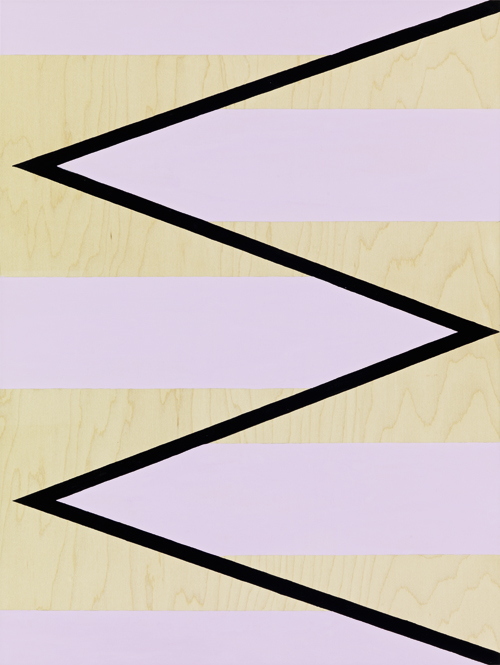
MTP It was very much a way of getting away from my personality, the ego basically, which is utterly boring.
JMA In this sense there are links between our understanding of the world and producing art, which is so different from, say, that of an expressionist painter. When he has eaten something horrible, he is going to make a painting which is very messy, or if he has a love affair, the painting is going to be dark or whatever.
MTP Yes, but of course the expressionist painter himself would never think it’s that mechanical or automatic. There’s always the idea of choice, decision, control.
JMA It’s trivial precisely because he doesn’t want it to be trivial. What he will invest in is drama.
MTP Yes, a narrative of personality; meaning with a capital ‘M’.
JMA Which is okay – it’s just a different line. But to me it’s important to keep in mind people like John Cage, who got us out of the psychological construction meant to justify the work and instead worked using mechanical systems such as chance operations or the I Ching. If someone looks at one of my paintings and says: ‘wow, he’s having big problems’, or ‘wow, he’s doing pour paintings now instead of dot paintings’ – although I’ve done both simultaneously through the years – and they understand that as being connected with my psychic situation, so be it. It’s wrong, because to me that’s not how it happened, but if they understand it that way, it’s also true. If they read it like that, it’s happening to them. The art you do doesn’t happen to you, it happens to the world.
MTP Which brings us back to Op Art. These period works can be charming because they are often slightly clunky – you hear the noises of the machine, the perturbation. But still the work is about activating something sensorial in the spectator, and in that sense it has a very democratic reach. That said, work like that of Julio Le Parc, for example, recently shown at the Palais de Tokyo in Paris, in some way is a 1960s forerunner of today’s ubiquitous tendency to turn the museum into a site for consumable experiences and entertainment – an idea that has become very bloated.
JMA You are held by a leash to act in a certain way, the push button way of directing spectatorship …
MTP Interactive art: there is an experience that you are supposed to have.
JMA It’s an outcome of the fairly modern concept of the exhibition. Very quickly, people understood that standing in a space with paintings made you part of an event which completely transformed the works. This in turn led to a tendency to restrict the work to a form of slogan, so that at least some sort of meaning would come through.
MTP Yes, it’s true of most of the 1960s and ’70s movements. If somebody asks me, what is Minimal art or Arte Povera, I can come up with a two-line response, but in regard to current work, it has become very, very difficult.

JMA Even historically, if you look at Italian Futurism: the social and political concerns of the day meant that people had to take sides; some swerved left, some swerved right.
MTP Yes, so you mean the situations or the politics of the time polarized the production …
JMA The reading of them did. This is why today, in a Western European country like Switzerland at least, it’s much more difficult to have a clear discourse because the sides are very difficult to read. Some people want to be the people who do monochrome paintings all their lives, but at the same time, there’s another guy who will paint a bridge day after day. No one’s wrong. Before, you had to choose. Now those choices are made at a different level and they are made by the people who read the paintings, not by the people who make them.
MTP But as an artist I’m also constructing a reading in my decision to make one thing after another. I definitely have a part in the mechanism, since I’m writing a narrative.
JMA You’re writing a narrative which is beyond you, that’s why it’s interesting. It’s maybe not by chance that I think of that point, because I was so close to not being around to follow my work and it would have gone on on its own.
MTP Just to explain: around 2010, you were very sick, close to dying and miraculously you recovered.
JMA Yes, of course it gives me some distance and it makes me better understand that it’s not what you do but what people make of it that is the reality. During that time, I dreamt that people would just get rid of all my work, and then I thought: it won’t happen, because people don’t know how to do that. It’s no longer my work, it belongs to something else.
MTP There is a natural human resistance to doing things that are beyond one’s personality, because it’s decentring and maybe scary.
JMA But it’s very often the aim to escape the limits of your personality.
MTP But then there are personal or mental roadblocks …
JMA Which makes me think of Genesis Breyer P-Orridge, whom I first got to know in the late 1960s, and who from the very beginning was concerned with getting rid of those mental roadblocks. I was in London visiting Stephen Willats, who back then was already doing his sociological art. He showed me his work as well as, proudly, his collection of electric trains. I looked out of the window onto a little park, and saw a guy doing some bizarre activity under a tree, some kind of ceremony. After my visit with Willats, who was a totally different kind of person from the man I saw, I walked up to this guy in the park and asked, what are you doing? He explained to me God knows what and we ended up exchanging contacts. At the time this guy was apparently already very much involved in Mail Art, and active with the performance and music group COUM Transmissions. We kept in touch, and later, in 1976, he got arrested for sending ‘indecent and offensive material’ through the mail – he had done a pornographic collage on a postcard of the Queen. He turned his trial into an art piece asking many people to contribute statements, including the likes of William S. Burroughs, Bridget Riley and Sir Norman Reid, then director of the Tate Gallery. In 1976 we published a book with Ecart Publications – the publishing arm of the art initiative I was involved with in Geneva – entitled G.P.O. versus G.P-O: A Chronicle of Mail-Art on Trial. G.P.O. stands for General Post Office, and G.P-O of course for Genesis P-Orridge. Later, I continued to show Genesis’s work at Ecart, on several occasions.
MTP 1976 was also the time when Throbbing Gristle started to perform concerts with Genesis as singer.
JMA We continued to stay in touch, and saw each other more often again from the early 1990s on, when he started to gradually turn into s/he, his ‘Pandrogyny Project’, looking more and more like his partner Lady Jaye.
MTP With Genesis, there is always this desire to go beyond limiting constructs, including constructs of gender and the limits of the body.
JMA It differs from what we were discussing before though – the desire of getting away from personality – because there is an obvious expressiveness in his work. And that’s fantastic, because it sort of ‘crumbles’ from something much more universal.
MTP Yes, the work goes beyond narrow concepts of the ego.
JMA There is a behavioural attitude which is part of what Genesis delivers, and which is beyond him also. He brings more to it than just being the person he is, which is why I think there is a possibility for his work to still mean something in 500 years. But of course for us who know him personally, our perspective onto the work is totally filtered by this knowledge.
MTP Which is why sometimes people don’t want to meet the artist whose work they like.
JMA 90 percent of them are not on this planet anymore anyway.
MTP Something that has been very important for both of us is collaborating with other artists. But not only just as artists, but also as organizers of exhibitions or as publishers of books, and so on. I guess even teaching fits under this rubric.
JMA It’s nothing special though: artists have been indulging in this kind of a position since forever, or at least the 19th century. So this idea of association and creating a platform, either to define your own work or to define that by others, is a natural tendency.

MTP Yes, all the major art movements arose out of collectives or groups.
JMA Association: whether it takes place in a bar, talking and getting drunk, or in an art school rethinking the world. When I was still very young, I was initially reluctant to show my work, and I guess that was part of why, together with friends who were not artists, I created this platform, Ecart, in 1969, which became a permanent gallery space from 1973 to 1980. It was like a service for people who didn’t have a space to show or perform their work, or who didn’t have people to perform it.
MTP Between 1969 and ’73, you staged performance events at your parents’ hotel in Geneva, right?
JMA Yes, in 1969 we did the first event, which was called Ecart, a week of happenings which were decided upon every evening by the people attending.
MTP And the co-organisers?
JMA There were five of us, and we were at the same time also a rowing team, four plus a coxswain: Claude Rychner, Claude Wachsmuth, Roland Faigaux and I, and the coxswain at the beginning was Michele Dufour, later replaced by Patrick Lucchini. It was a serious activity.
MTP You were competing in the National Juniors …
JMA We rowed for three hours a day every day, throughout the year. This was an activity that sealed our relationship tightly. When I started getting involved in doing art, I sort of dragged everyone in. Amongst the five of us, everyone would drag everyone else into whatever they were doing.
MTP Rowing is about synchronization.
JMA It’s more than that, you become the other people. When something goes wrong, say number four is not doing as he should …
MTP … it’s not just him being responsible but also you – it’s a group mindset.
JMA Exactly, and that naturally spilled over into other collective activities. Those were the hippie days, so we would suddenly say, let’s go to the mountains and stop talking for two weeks, and we would do it. I planned to enroll at Kunstakademie Düsseldorf in September 1967 but a few months before that I was drafted to do military service. I was an active pacifist so I refused to go and was sentenced to four months in prison. For me, the trial was a fantastic event, because I felt I learnt about society – a crash course. Being imprisoned was a second crash course, I learned much more than I could ever have learned in any kind of academy. I remember sending letters, written on the prison’s fantastic stationary, to my rowing friends in this funny language we had.
MTP A kind of special secret language, like with twins?
JMA Yes, it was quite extreme in those days. So in my letter I suggested that when I would come out, instead of going to Dusseldorf, we should open a gallery. Around 1967/8, we were already doing performances, a bit like the Situationists: walking around the streets and looking at the roofs. We decided to do the Ecart Happening Festival in ’69, a two-week festival based on formats inspired by Allan Kaprow, Dick Higgins and John Cage. All were participatory and elaborated by the audience. From then on, we went on doing these kinds of things all the time.
MTP This materialized in a work of yours, Untitled (1972/4), which today is in the Ecart Archives, housed at the Musée d’art et d’histoire, Geneva: you had collected all sorts of silver paper in the streets – tinsel, chocolate wrappers, the stuff used inside cigarette packages, etc. – and glued them onto a big poster-sized sheet of paper in a grid …
JMA We systematically filled up these grids, it was like entomology. The work was conceived by me but it was performed by anyone else in the group. Initially we did things in a kind of workshop situation, inviting friends to take part, like going to the mountains in winter and throwing a bucket of water that would immediately freeze. We did many things like that for a couple of years, until one day I thought maybe we should do it differently. This was the beginning of Ecart.
MTP So you decided it needed to become more formal, to involve a public.
JMA Exactly, so we started to advertise our programme with posters. Every day something was going on – dance, film, performance, happenings. A typical type of happening, such as The White Flights of the Imagination & Other Pieces (1969) would involve each of us repeating the same gesture for a whole evening – such as shredding white paper, emptying a bucket of stones into another, or spreading white flour all over the place and the others – and people could see us only through a plastic sheet.
MTP You could organize the events at the hotel of your parents for free, and they sustained you, which gave you a lot of freedom, as you didn’t have to sell stuff to survive.
JMA Yes, and this continued when in 1972 we were given a separate space, again by my father, and the gallery went on in that location for almost ten years. So we had the space for free, but on the other hand, if you wanted to advertise an event in those days it was very difficult. And as there was of course no Internet we had to print things – which was unbelievably expensive.
MTP That was why you started a printing shop.
JMA Yes, we increasingly got better machines, until we had an offset printer that could do four-colour separation. We started to make a living from commercial printing jobs for galleries, for the hotel etc. We still did the rowing, too – so we would print all night, sleep, go rowing, then hang a show and then go back to rowing, and then back to printing in the cellar. We did a show every two weeks, with artists from all over the world, people like Joseph Beuys, Lawrence Weiner, John Cage, Andy Warhol. And they all came.
MTP I guess it was easier to reach those kinds of big name artists at the time – the hierarchy wasn’t that set. You yourself have remained like that – if a bunch of students in Spain were to ask you to do a show in the back of a pizzeria, you would probably do it. Normally today, because the art world is so much more professionalized, a lot of established artists would probably think that it’s not good for their career to waste their time with a small venue …
JMA When David Briers used to work at Studio International magazine in the 1970s, he once said that Ecart was one of maybe five places in the world which did that kind of thing. Today, claiming anything like that would be ridiculous – there would be a myriad of places of that kind. Back then it was all part of one network – Genesis for example was also part of it. When Ecart as a permanent space was over, I continued to collaborate with others and organize shows, just as you do.
MTP Yes, structurally things are organized differently now, but it’s still possible to do things in a fairly non-hierarchical way and have it not be so much about big production values. I think that lightness of production is really quite important.
JMA It’s a question of attitude.
MTP I don’t think you’re going to be the kind of artist who contacts NASA and says, listen, I have a project that I want to realize with you.
JMA Unless someone does it for me.
MTP That’s what I mean: you need an outside trigger. And you don’t feel dispossessed if someone else takes your idea and turns it into something else.
JMA It’s like when you add dressing to a salad. Our singular view is just dressing. The salad leaves are not us, or ours, so we dress them and have sort of an understanding, because we flavour them in that way.
MTP My ayurvedic doctor told me to avoid salad, and if I were forced to have one, I’d at least have as much dressing as possible.
JMA Can you have dressing with no salad?
MTP I don’t think so.
JMA That’s too bad … That’s a good title: ‘Dressing, no Salad’.










